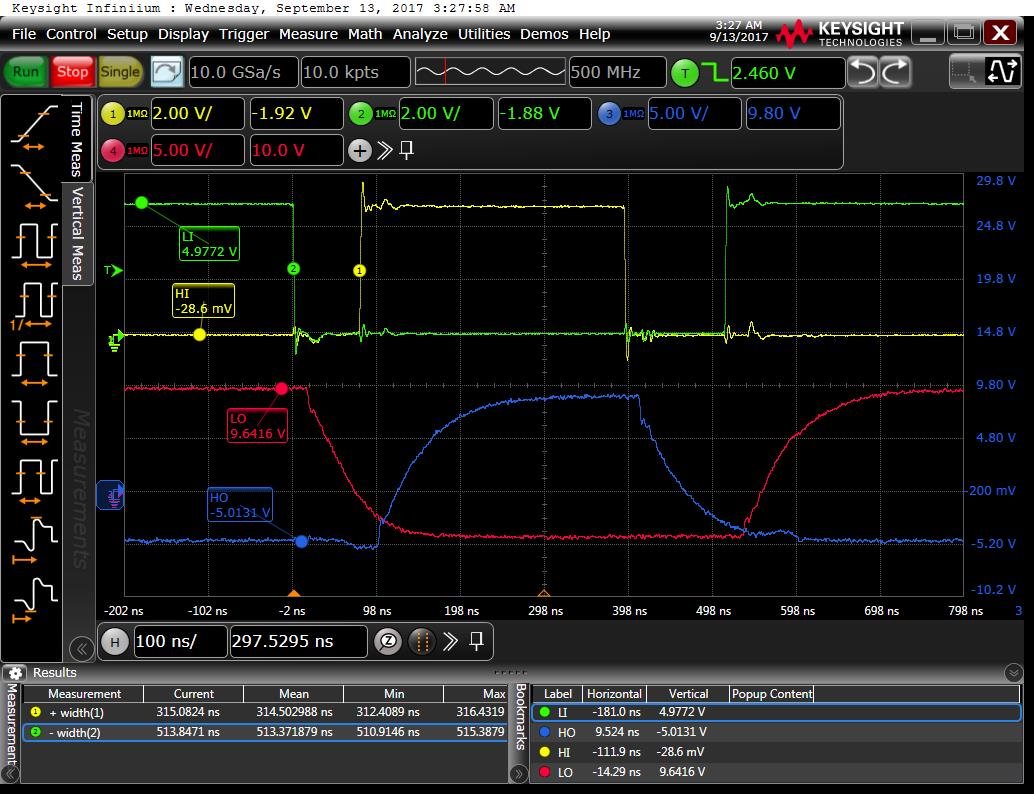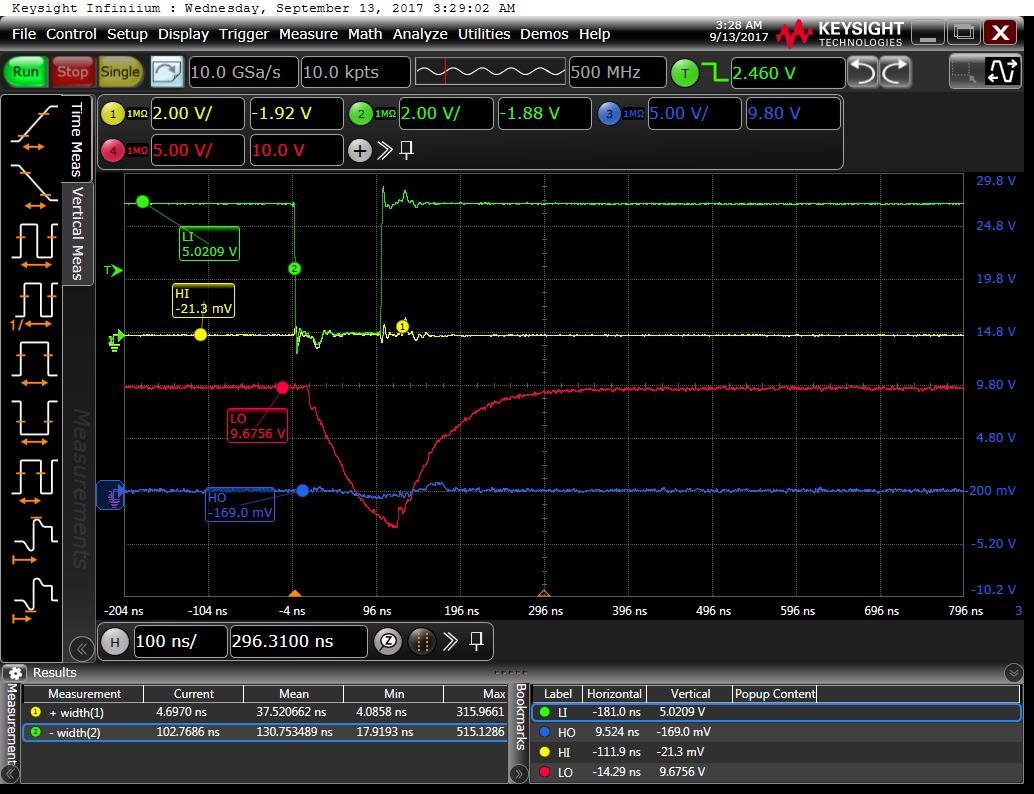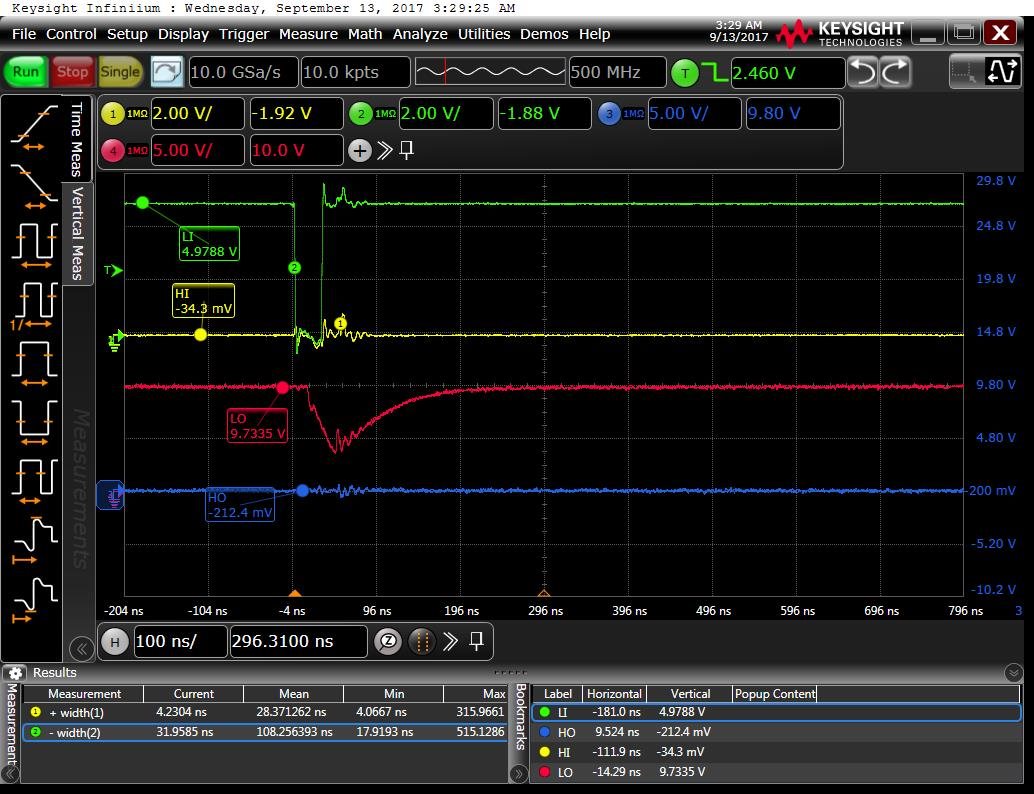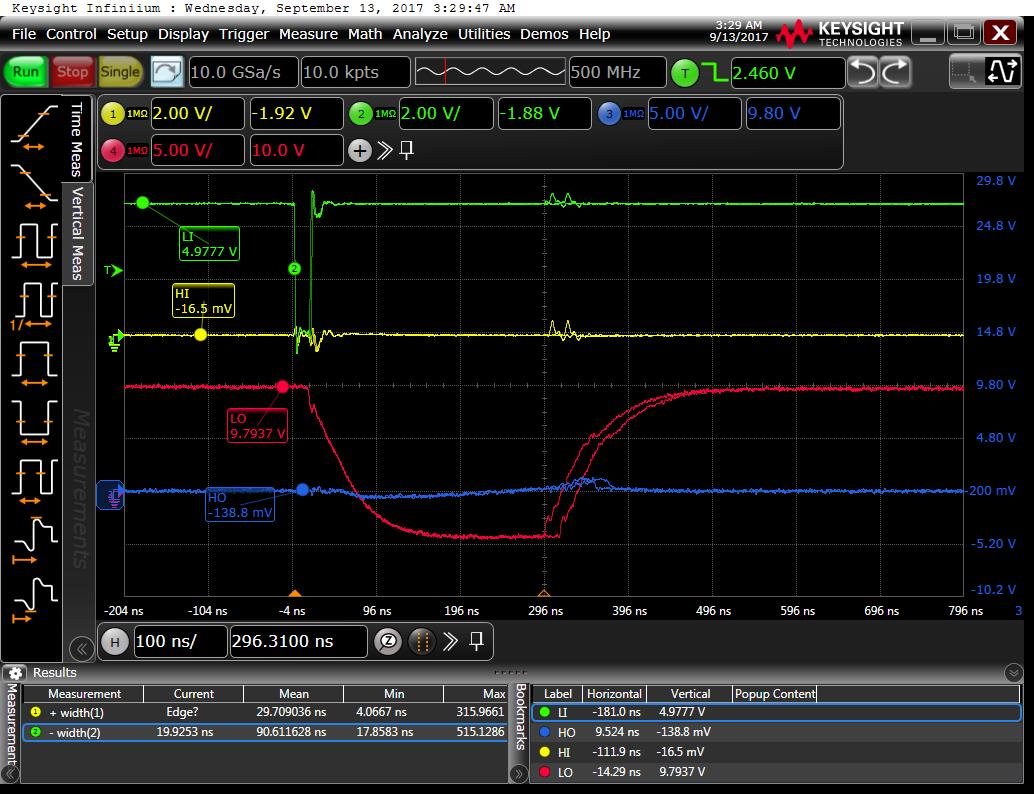Other Parts Discussed in Thread: UCC27282, UCC27800
I have a customer who has seen the following when decreasing the duty-cycle of the HI/LO pulse widths to <50ns. The reason I mentioned 50ns is that the data sheet states that the minimum pulse width that is need to change the outputs is 50ns. I have explained this to the customer and he understands the data sheet specifications, but is wondering why the device reacts in the manner that it does. He stated the following:
The datasheet says, and this is quoted from the datasheet, “Minimum input pulse that changes the output - 50ns max”. To me that says that if you provide pulses narrower than 50ns there is no guarantee that the output will change state in response to the narrow input pulse. It doesn’t mean that the output behavior is completely undefined if it is provided with narrow pulses.
He believes that the device should not respond to these short pulses at all. I explained that this was not the case, but he still wants an explanation of the behavior that he is seeing. I understand if you do not directly address his questions, but I am submitting them because he has requested that I do. His response was this:
How an IC responds in corner case conditions that are likely to happen (even if the spec sheet is written to steer users away from it) is what separates a cheap knockoff and a premium brand. I would appreciate it if you could provide my feedback to your R&D team for consideration in your future designs. As an R&D designer I would appreciate to hear detail application related issues regarding my design.
I have included 4 scope shots of the response of the UCC27211. They are as follows:
UCC27211-1 shows conditions where both HI and LI have sufficient pulse width to actuate the FETs
UCC27211-2 shows narrower duty cycle where the HI is no longer being actuated and LI is the only one being actuated and still controlling the SyncFET.
UCC27211-3 shows yet narrower duty cycle right before the IC shows the pulse width distortion. The SyncFET is still slightly modulated.
UCC27211-4 shows even narrower duty cycle where now the LO pulse width is roughly 280nS wider than LI.
So a very narrow pulse width actually produces a “long” pulse on the output. Can you explain what is happening here?
Thanks for your help with this!
Richard Elmquist





